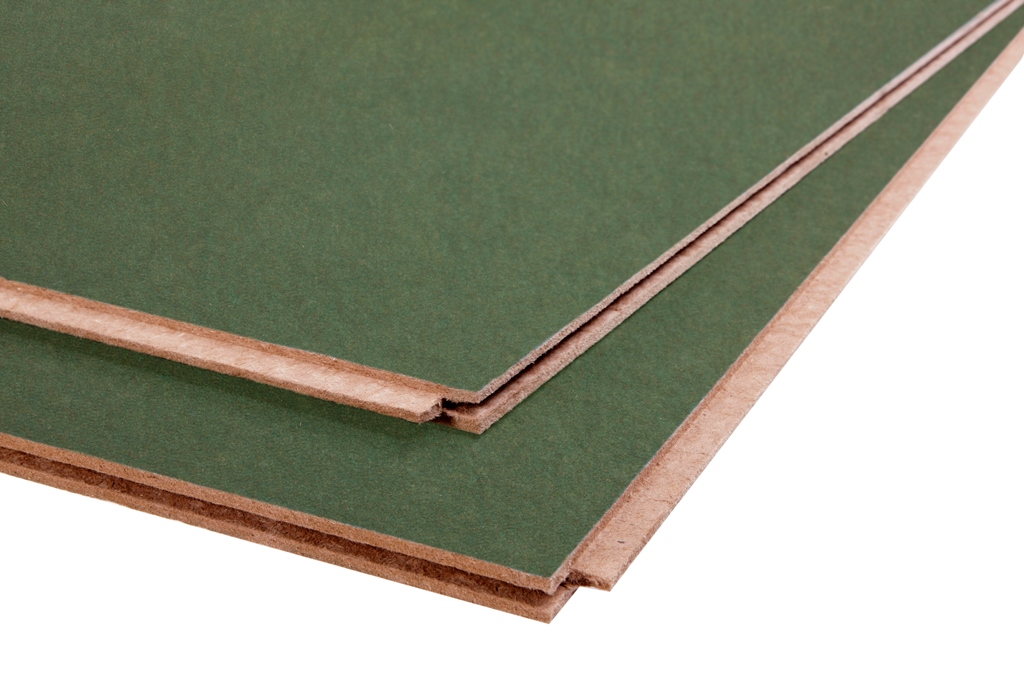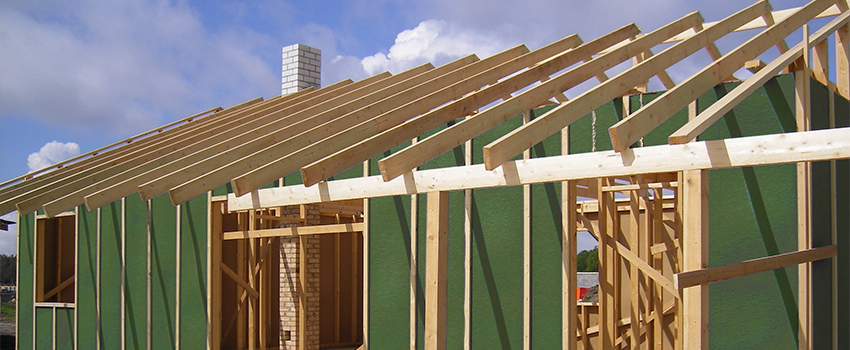Usage of wind barrier board
Wind barrier boards are used as a wind blocking, insulating and stiffening elements in constructions of exterior walls, ceilings and roofs.
Advantages
- Protects construction from weather conditions
- Natural and breathable material
- 100% natural wood fibre
- Supports insulation materials like loose and blown wool
- Additional thermal insulation
- Sound insulation
- Stable shape and dimensions
Wind barrier board 25 mm
- Increases constructional rigidity
- Possible to plaster
Wind barrier board 25 mm with Tongue and Groove joints (Universal boards)
- Avoid thermal bridges without taping
- For using on the roofs with angle over 20˚ (boards with tongue and groove joints)
- Possible to plaster


Wind barrier board technical data
12 mm board | 25 mm board | 25 mm mm board | 25 mm board | 25 mm board Tongue and Groove joints Universal | 50 mm Tongue and Groove joints Universal | ||
|---|---|---|---|---|---|---|---|
Thickness | mm | 12 (-1/+1,2) | 25 (-1/+1,8) | 25 (-1/+1,8) | 25 (-1/+1,8) | 25 (-1/+1,8) | 50 (-1/+1,8) |
Boards on pallet | pcs | 95 | 45 | 45 | 45 | 90 | 44 |
Amount on pallet | m2 | 307,8 | 145,8 | 86,4 | 101,25 | 97,2 | 47,52 |
Width | mm | 1200 +- 2 | 1200 +- 2 | 800 +- 2 | 1200 +- 2 | 600 +-2 | 600 +-2 |
Length | mm | 2700 +- 5 | 2700 +- 5 | 2400 +- 5 | 1875 +- 5 | 1800 +-5 | 1800 +-5 |
Density | kg/m3 | ≥240 | ≥240 | ≥240 | ≥240 | ≥240 | ≥240 |
Thermal conductivity λD | W/mK | ≤ 0,049 | ≤ 0,049 | ≤ 0,049 | ≤ 0,049 | ≤ 0,049 | ≤ 0,049 |
Reaction to fire | Class | E | E | E | E | E | E |
Bending strength | N/mm2 | ≥1,2 | ≥0,8 | ≥0,8 | ≥0,8 | ≥0,8 | ≥0,8 |
Swelling in thickness | % | ≤ 6 | ≤ 6 | ≤ 6 | ≤ 6 | ≤ 6 | ≤ 6 |
Air permeability, Δp 100 Pa | m3 / m2 sPa | ≤ 10 x 10-6 | ≤ 10 x 10-6 | ≤ 10 x 10-6 | ≤ 10 x 10-6 | ≤ 10 x 10-6 | ≤ 10 x 10-6 |
Vapour permeability | kg / m2 sPa | ≥ 1,5 x 10 -9 | ≥ 1 x 10 -9 | ≥ 1 x 10 -9 | ≥ 1 x 10 -9 | ≥ 1 x 10 -9 |
Installation of wind barrier boards
Wind barrier boards are attached to construction in direction of frame. Distance between frame beams (measured from the centre-to-centre of the beam) must be 600 mm.
Wind barrier boards must be installed in a way that there are 2–3 mm gaps left between the boards. To ensure the weather ability of these connections that are not on the frame, a wooden joist must be set under the connection site and the ends of the boards are attached to this joist. You can also use elastic construction tape to tighten the 25 mm boards.
The boards are attached with either nails or staples.
A longitudinal streak in a centre of a board simplifies the nailing of the board.
Installation of 12 mm wind barrier boards
Use hot-dip galvanized nails with large nail heads (length: 40 mm or longer) or staples (length: 32 mm). The distance between nails/staples and the edge of the board must be at least 10 mm. The distance between these nails/staples that are attached to the edge of the board must be 100 mm; the distance between these nails/staples that are attached to the centre of the board must be 200 mm.
Installation of 25 mm wind barrier boards
Use hot-dip galvanized nails, we recommend nails with large nail heads (length: 70 mm or longer) or staples (length: 58 mm or longer). The distance between nails/staples and the edge of the board must be at least 10 mm. The distance between these nails/staples that are attached to the edge of the board must be 100–150 mm; the distance between these nails/staples that are attached to the centre of the board must be 300 mm.
Installation of 25 mm wind barrier boars with tongue and groove joints (UNIVERSAL boards)
Unlike the usual wind barrier boards, the wind barrier boards with joints are attached horizontally (perpendicularly to frame). This eliminates the possibility that the connections of the boards do not overlap with the frame (no need to install additional joists, no need to use construction tape etc). This prevents the cold bridges from forming (if possible, install the boards so that they are slightly shifted).
Use hot-dip galvanized nails to attach the boards, we recommend nails with large nail heads (length: 70 mm or longer) or staples (length: 58 mm or longer). In order to prevent damages to joints, the distance between nails/staples and the edge of the board must be at least 35 mm. The distance between these nails/staples that are attached to the edge of the board must be 100–150 mm; the distance between these nails/staples that are attached to the centre of the board must be up to 200 mm.
* Wind barrier boards must be covered with cladding as soon as possible. In order to guarantee the conversion of humidity, a 20–50 mm air gap must be left between the board and the cladding. The battens of the cladding must be vertical or constructed in a way that guarantees the vertical movement of the air between the cladding and the wind barrier board.
Installation of Universal board with Tongue and Groove
Installation of universal wind barrier board








